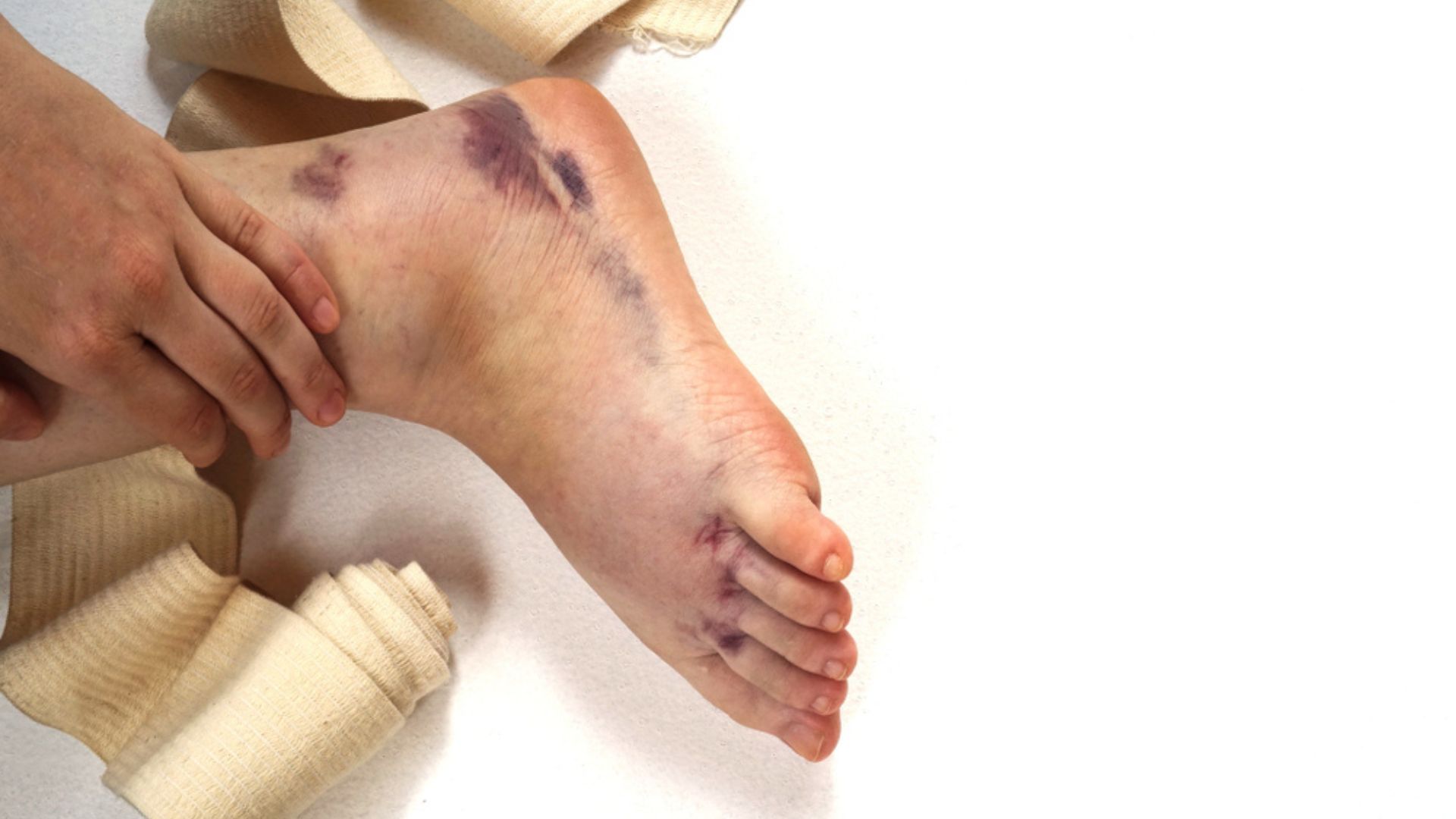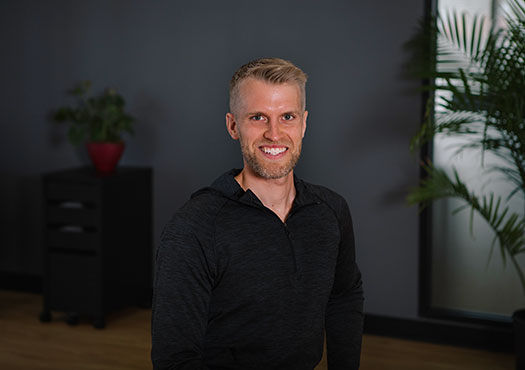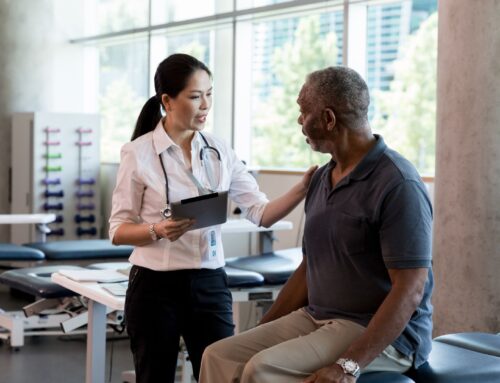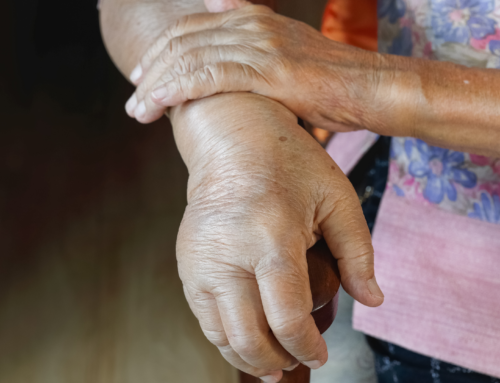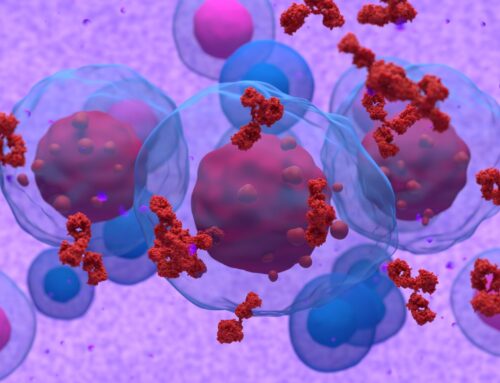Ice has been a standard treatment for soft tissue injuries, like sprains, strains and bruises, or sore muscles for many years. But does ice help with inflammation? Actually, there is a growing amount of research that shows ice and complete rest may delay healing, instead of promoting it.
At Propel Physiotherapy, we consider the latest evidence-based research to determine the best approach to healing and rehabilitation. This has led to a re-thinking of the way acute and chronic injuries are managed.
In this blog post, we will look at the body’s natural tissue healing process, the benefits and risks of using ice, some commonly used guides for soft tissue injury care, and an alternative to the treatment of tissue injuries called PEACE and LOVE.
Table of Contents:
- Inflammation and Tissue Healing
- RICE Method for Injuries
- Does Ice Help with Inflammation?
- Are There Still Benefits to Icing After an Injury?
- What Should We Do To Encourage Healing Instead?
- Conclusion
Inflammation and Tissue Healing
To understand why the advice about ice is changing course, we need to think about the healing process. When you get injured, your body activates the first stage of healing, called the inflammatory phase. The job of inflammation is to mobilize and transport the ‘clean-up crew’ that will clear away the damaged tissue and bring various agents of your immune system to the injured area.
During the inflammatory phase, the body increases circulation to the injured area, which is why we see swelling in this area. Without this process, the rest of the healing goes substantially slower and is less effective.
After inflammation, your body continues with the healing process, which includes building replacement tissue, helping it mature, and finally integrating it into the existing tissue structure.
Inflammation becomes problematic when it happens for too long or is too high in intensity. If this happens, it can get in the way of the tissue rebuilding process which happens after the inflammation phase. When the level of inflammation is equal to the degree of damage, optimal healing can occur.
Thus, inflammation is not inherently a ‘bad thing’ for our bodies and we shouldn’t always rush to stop it. Inflammation is actually an essential part of healing and some of the inflammatory compounds active in the initial ‘clean-up’ stage of healing also play a role in tissue rebuilding later.[i],[ii]
RICE Method for Injuries
RICE is an acronym that has been commonly used as a guide to basic level care for minor soft tissue injuries, like a sprain.
R for Rest
I for Ice
C for Compression
E for Elevate
RICE and other previously used acronyms, such as PRICE, and POLICE involve treatments which can help to address pain and are only aimed at the acute care of an injury. Although these acronyms do remind us of some valuable advice, such as compression and elevation, they do not at all address the subacute and chronic stages of healing. This has led to an overuse of these treatments past the acute stages of an injury, often leading to prolonged rest, ice, and elevation when it is no longer beneficial.
You may also enjoy reading: Strategies to Prevent the Most Common Injuries
Does Ice Help with Inflammation?
- Ice constricts blood vessels during icing and for hours after the ice has been removed. This restricts the number of macrophages (specialized cells that prepare the wound for healing) that can get to the injury site.[iii]
- Ice prevents the macrophages that do arrive from releasing important hormones, such as ICG-1. This delays the signaling for further tissue healing processes to occur.[iv]
- Ice may slow the rate of lymphatic drainage from an area and make the lymphatic vessels ‘leaky’, which allows for fluid to move back into the injured tissue.[v]
To answer the question, does ice help with inflammation, the answer is yes with a caveat. While ice may slow the rate at which swelling develops through the constriction of blood vessels, it comes at the cost of restricting healing agents to the site, slowing lymphatic drainage, and making that lymphatic drainage ‘leaky’.
Are There Still Benefits to Icing After an Injury?
Despite some of these negative effects of ice on tissue healing, as anyone could tell you, there continues to be a benefit of using ice for pain relief when necessary. To maximize the use of ice as a pain reliever and still allow for optimal tissue healing, one study has suggested the following schedule: 5 minutes of icing followed by 20 minutes of no icing, repeating only twice to avoid overcooling of the injured area.[vi]
What Should We Do To Encourage Healing Instead?
An editorial in the British Journal of Sports Medicine in 2020 suggests a new approach which incorporates acronyms for immediate care (PEACE) to subsequent management (LOVE).[vii]
This guideline outlines the importance of healthcare providers educating patients and addressing the multiple factors which enhance recovery. While icing and anti-inflammatories have shown benefits on pain and function, this new acronym flags their potential harmful effects on optimal tissue repair.
PEACE – Immediately after an injury
P for Protect
- Unload or restrict movement for 1-3 days to reduce the risk of injury aggravation
- Rest should be minimized as prolonged rest can compromise tissue strength and quality[viii]
- Use pain as a guide to return to movement
E for Elevate
- Elevate the limb higher than the heart to promote fluid flow out of tissues
A for Avoid anti-inflammatory modalities
- Inhibiting the inflammation process using medication may negatively affect long-term tissue healing, especially when using higher doses.
- There is no high-quality evidence on the efficacy of ice for treating soft tissue injuries.[ix] Even when used only for pain relief, ice could potentially disrupt a number of the bodies healing processes and may lead to impaired tissue repair.[x]
C for Compress
- External pressure by using taping or bandages helps to limit joint edema and tissue bleeding.
E for Educate
- Therapists should educate their clients on the benefits of an active approach to recovery.
- Passive treatments such as electrotherapy, manual therapy, and acupuncture, early after injury may be counterproductive in the long term in certain conditions.[ix]
- Better education on the condition and load management will help avoid ‘overtreatment’ and reduces the likelihood of unnecessary injections or surgery.[xi]
LOVE – After the first days of the injury have passed
L for Load
- An active approach with movement and exercise benefits most patients with musculoskeletal disorders.[ix]
- Mechanical stress or load should be added early and normal activities resumed as soon as symptoms allow.
- Optimal loading without increasing pain promotes repair and builds tissue tolerance.[xii]
O for Optimistic
- Optimistic patient expectations are associated with better outcomes and prognosis.
- Psychological factors such as catastrophisation, depression and fear can represent barriers to recovery.[xiii]
V for Vascularisation
- Pain-free cardiovascular activity or aerobic exercise should be started within a few days of the injury, which acts to increase motivation and increases blood flow to injured tissue.[xiv]
E for Exercise
- Exercises helps to restore mobility, strength, and proprioception early after injury.[ix].
- Pain should be avoided to ensure optimal repair during the subacute phase of recovery and should be used as a guide for exercise progression.
You may also enjoy reading: The Benefits of Regular Exercise
Conclusion
This new way of thinking about healing soft tissue injuries requires a bit more critical thinking and assessment by the patient and their health care practitioner. It gives us pause to think twice before using ice.
By providing education around when and why we are using specific treatments, we give our patients more control in their rehabilitation and more tools to overcome future injuries. For example, one of my client’s who has spent the last 6 months recovering from a motor vehicle accident, recently had an acute knee injury. He was able to use a number of approaches from the PEACE and LOVE model to address this injury and prevent a major setback in his rehabilitation program.
Firstly, this client was able to Protect and Elevate the injury for a couple of days, but then quickly and confidently moved into the Exercise part of recovery. With an active approach to injury recovery, he was going for walks and moving his injured knee as tolerated. He reported feeling more in control of his recovery, because of our previous education around pain, tissue healing, and an active approach to recovery.
The PEACE and LOVE principle a very comprehensive and beneficial tool for promoting healing and return to activity, avoiding prolonged injury, and preventing repeat or chronic injuries.
Our team of physiotherapists can customize a treatment program specific for your symptoms and goals and provide education on the optimal use of ice and other treatment approaches. To learn more about our orthopedic rehabilitation services, connect with one of our clinicians at Propel Physiotherapy in Etobicoke, Pickering, or Peterborough.
References
[i] Toth KG, McKay BR, De Lisio M, Little JP, Tarnopolsky MA et al IL-6 induced STAT3 signalling is associated with the proliferation of human muscle satellite cells following acute muscle damage. PLoS ONE(2011) 6(3):e17392:1-12
[ii] Powers SK, Duarte J, Kavazis A, Talbert E Reactive oxygen species are signalling molecules for skeletal muscle adaptation. Exp Physiol 2009;95(1)1-9
[iii] Khoshnevis S, Craik NK, Diller KR Cold-induced vasoconstriction may persist long after cooling ends: an evaluation of multiple cryotherapy units. Knee Surg Sports Traumatol Arthrosc. 2014;Feb 23.
[iv] Nemet D, Meckel Y, Bar-Sela S, Zaldivar F, Cooper DM, and Eliakim A Effect of local cold-pack application on systemic anabolic and inflammatory response to sprint-interval training: a prospective comparative trial. Eur J Appl Physiol, Nov 2009;107(4):411-417.
[v] Meeusen R, Lievens P The use of cryotherapy in sports injuries. Sports Med 1986 Nov-Dec;3(6):398-414.
[vi] Thorsson O, Lilja B, Alhgren L, Hemdal B, Westlin N The effect of local cold application on intramuscular blood flow at rest and after running. Med Sci Sports Exerc. 1985 Dec;17(6):710-13.
[vii] Dubois B, Esculier JF. Soft-tissue injuries simply need PEACE and LOVE. Br J Sports Med. 2020 Jan;54(2):72-73. doi: 10.1136/bjsports-2019-101253. Epub 2019 Aug 3. PMID: 31377722.
[viii] Bleakley CM, Glasgow P, MacAuley DC. Price needs updating, should we call the police? Br J Sports Med 2012;46:220–1.
[ix] Vuurberg G, Hoorntje A, Wink LM, et al. Diagnosis, treatment and prevention of ankle sprains: update of an evidence-based clinical guideline. Br J Sports Med 2018;52:956
[x] Singh DP, Barani Lonbani Z, Woodruff MA, et al. Effects of topical icing on inflammation, angiogenesis, revascularization, and myofiber regeneration in skeletal muscle following contusion injury. Front Physiol 2017;8:93.
[xi] Graves JM, Fulton-Kehoe D, Jarvik JG, et al. Health care utilization and costs associated with adherence to clinical practice guidelines for early magnetic resonance imaging among workers with acute occupational low back pain. Health Serv Res 2014;49:645–65.
[xii] Khan KM, Scott A. Mechanotherapy: how physical therapists’ prescription of exercise promotes tissue repair. Br J Sports Med 2009;43:247–52.
[xiii] Briet JP, Houwert RM, Hageman M, et al. Factors associated with pain intensity and physical limitations after lateral ankle sprains. Injury 2016;47:2565–9.
[xiv] Sculco AD, Paup DC, Fernhall B, et al. Effects of aerobic exercise on low back pain patients in treatment. Spine J 2001;1:95–101.
Written by

